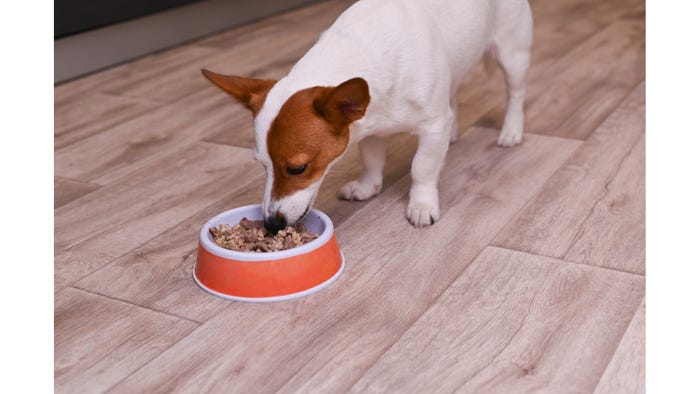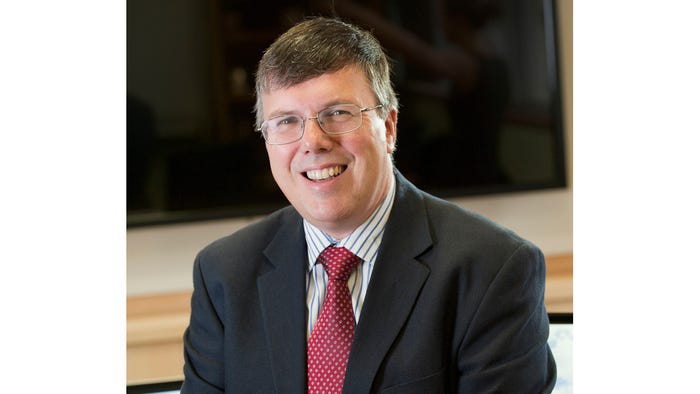Q&A: NFPA 660 Standard for Combustible DustsQ&A: NFPA 660 Standard for Combustible Dusts
This article provides answers to common questions about the new 660 standard. The Q&A stems from the January DryPro webinar, NFPA 660 Standard for Combustible Dusts: What You Need to Know About the Changes from the Previous Standards.

Powder & Bulk Solids recently presented “NFPA 660 Standard for Combustible Dusts: What You Need to Know About the Changes from the Previous Standards” as part of the DryPro webinar series. The webinar provides a basic review of the new standard and what it will mean for its users and industry.
Jack Osborn, senior project engineer for Airdusco Engineering and Design Services LLC, discussed the new NFPA 660 Standard for Combustible Dusts, which has a new format and contains significant and not-so-significant changes. Osborn also answered several questions from attendees. Those questions and answers are below:
Click here to view the NFPA 660 Combustible Dust webinar, now on demand.
Q. Have any jurisdictions adopted 660 yet?
A. No, because it wasn’t out soon enough, and I don’t know if state legislature works at lightning speed. It’s going to take a little while to get there, but it absolutely is going to happen. So, let’s get in front of it and use the standard.
Q. How does NFPA Standard 77 fold into 660?
A. I believe 77 is electrostatic. I thought that was a recommended practice and not an actual standard. But 77 is completely separate standard handled by a separate committee. It is referred to in this standard but only when you talk about electrostatic conditions. It’s really more in how to prevent them and understand them and create situations where you eliminate them. We talk about what will happen if you have it. There is a difference but is an excellent reference if you have that problem.
Q. Are DHAs handled by companies themselves or by third parties?
A. It can be done by one person, 50 people… it doesn’t matter who. The one who makes that decision is the owner/operator. That person can say, we can say “We have enough expertise in our own company and we can do our own DHA.” Just do it properly, that’s all I ask and be honest. But probably most people — and that includes most of the big companies — will utilize companies that are capable of doing them. Airdusco do them as do many other companies. You should have help most of the time if you have a large process or a new system, because you want to do this before you buy equipment and before all the drawings are finished.
Q. Do the new standards allow for a new pneumatic conveying line not have blowback prevention as long as it’s smaller than a specific diameter.
A. That was something thrown in years ago. We had people come in from testing firms that proved that was not true. You can have explosions with very small conveying lines. It odes inhibit the propagation because of the friction levels in the line. But you can do a performance-based design approach and determine if your situation is unique and can’t create an explosion propagation. But at this time, there is no exemption whatsoever other than the ingredient transport system for the food industry. And that is a very special condition and very limited.
Q. Does the new standard provide guidance on the extent of hazardous locations, or do we still need to refer to NFPA 499?
A. If you’re talking about going through your facility and determining Class 1, Class 2, Class 3, or something along those lines, Division 1, 2, that’s quite different. 660 doesn’t get into that. What we’re looking at when we do a DHA, is not areas except for when you’re talking about a building around a milling operation or a planer. But if you’re talking about what 499 covers vs. 660, they are two different worlds. 660 talks about the actual combustible dust itself and its affect on everything around it; whereas 499 is actual prevention or what type of construction or motor types you should have for certain areas.
Q. In terms of equipment design, what has been changed from 484 and 660?
A. You’ll find the vast majority of equipment design for the metals industry is contained in Chapter 22. The fundamentals apply only if it’s an obviously fundamental item, like with dust collection, it would be hood design, duct velocity that would be fundamentals. But if you’re talking about using a wet separator, cartridges, there are quite a few differences. I would go to Chapter 22 in addition to the fundamentals. But the fundamentals has very specific stuff.
Q. Does the new NFPA 660 cover NFPA 91 standards for air conveying?
A. No, 91 will stay the same because it covers ventilation and fume control also, and non-combustibles, so it is a separate standard. Though It is still handled by the 664 committee, which is the Chapter 25 committee now.
Q. Does section 9 of 664 stay the same when it comes to dust collection system requirements for systems above and below 5000 CFM?
A. There are few changes in chapter 24 (wood) in respect to the previous 664. Chapters 1 through 10 apply and chapter 24. Systems below 5k still have to comply with virtually ALL of the fundamental requirements. Only the enclosureless dust collectors are considered as a possible variation.
Q. Are DHA templates available for use?
A. Only those in the Annexes of 660. However, PHA (Process Hazards Analysis) templates or examples are also available which follow the same procedure. It often depends upon what is best applicable to your needs as some situations are simpler than others.
Q. If just starting to dive into explosive dust design standards, which other standards should I gain familiarity with besides 660 for building/equipment design requirements?
A. I would suggest you consider using the NFPA Link program, which gives you access to ALL the standards — monthly fee. At a minimum, you would want to be familiar with NFPA 70E (electric code), 77 (static electricity), 91 (ducting, etc.), 68 (explosion venting), and 69 (all other types of explosion protection).
Q. According to NFPA 660 3.3.36, an enclosure is defined as a confined or partially confined volume. For small outdoor dust collectors with partially covered filter bags and panels featuring small holes or gaps, how can we determine if the system is not considered an enclosure, and thus NFPA standards do not apply?
A. The simple answer to this is that any dust collector (or Air Material Separator or AMS) that involves combustible dust is subject to the NFPA combustible dust standards and thus NFPA 660. If the unit you are using is classified as an enclosureless dust collector, it is subject to the sections in 660 that cover that type of AMS. Otherwise, it is a dust collector — holes or not — or AMS.
Q. Why is NFPA 660 not a code yet? What is required to move from standard to a code?
A. Politics. I personally believe, it will become a Code in the relatively near future. It often depends upon whether the states want it to be a code or not, OR the Standards Council of NFPA.
Q. 2020 of NFPA 654, 3.3.32 says MIE is determined using ASTM E2019 using the lowest capacitive spark energy. Ditto reference A3.3.32 says to do test without inductance. Ditto 9.4.3.1 — purely capacitive discharge. New 660 MIE definition says: “lowest capacitive spark.” 660 section 5.4.3.1 says test using E1515?
A. There might be some confusion here and it should be brought up with the 660 fundamentals committee, especially as a public comment for the next cycle. Additionally, Airdusco EDS always recommends using the MIE test without inductance, which should provide a realistic value, especially for lower MIE materials. However, if electric arcs are possible (in the involved area), perhaps both might be of value. Sometimes, our best intentions get away from us.
Q. Follow up on the previous question about which standard to use for MIE? 654 says ASTM 2019. 660 3.3.79 references CMD-FUN says ASTM E1226. 660 5.4.3.1 says ASTM E1515. Which one do you use and why determined by capacitance only (no inductance)?
A. Since 660 is the current standard, it and only it should be used and the referenced ASTM tests or related information. 660 does not dictate which test is required but makes it clear that the MIE value without inductance is likely more representative of typical hazards — but not in all cases. Also, if different tests are listed there may be subtle reasons or differences whey they were referenced. I am not an expert on the subtle nuances of testing by the ASTM.
Q. As combustible dust protection experts, what do we do with what seems to be "internal politics compromises" carveouts and exceptions (like the 25% replacement cost exemption for DHA updating) that are less strict than the previous separate standards (which might still be legally applicable in certain jurisdictions)?
A. If you are a food processing or Agri company, you can use the 25% exemption. However, if it were me, I would never use this approach but would consider what the revision does to the system — whether it costs 25% +/-. Our company always will use the safest approach due to ethics and liability. Would suggest the same. You have the option.
Q. Does chemical isolation work as well as an abort gate when properly designed and sized?
A. Chemical explosion isolation and abort gates have totally different functions. Abort gates are too “slow” to react to an explosion (microseconds and milliseconds) and are not allowed for use with explosions — fire only or some other use. Chemical explosion isolation is not viable for fires and is designed for explosion isolation only. A chemical “canister” can be provided that would be designed for fires only but would use a different chemical than the typical baking soda in the explosion isolation canisters.
Q. Will there ever be some differentiation with types of equipment? There are different Bucket elevator types that are fundamentally different from each other (Centrifugal vs. a positive discharge type, such as Pivoting type that dump material via gravity?)
A. I agree that there can be reasons to differentiate between equipment types, such as certain types of elevating conveyors (bucket elevators, Z conveyors, etc.). If you have specific considerations, I suggest providing a public comment to the applicable 660 committee during the 3-year cycle (likely to start in 2026), or you can address it now to the NFPA regarding 660.
Q. Does the new standard maintain the requirement that only vacuum systems are approved for use with class 2 dusts be used?
A. First, NFPA does not “approve” anything. They require listing and labeling according to the standards. Portable vacuum “systems” require listing/labeling (see definitions in Chapter 3) according to how they are used. Normally, it is Division 1, etc. Centralized vacuum systems are not “listed or labeled” but require Air-Material Separators (aka, dust collectors/filter receivers) or AMS that have explosion protection. The vacuum producer should be on the clean side and does not require protection. Explosion isolation may also be required.
Q. Aside from the DHA checklist now as an option, are there other general areas where the new 660 seems more "lenient" than the "old" standards? Specifically with reference to what is currently required by AHJ as part of codes.
A. First, when I used the term “lenient” that is my opinion based upon my experience and in reference to the Fundamentals Chapters. Second, the checklist is permitted but, in my opinion, it is a mistake to use only that approach. If your facility has an “event,” lawyers can rip apart any DHA that uses only a check list — that is from personal experience. Third, yes, it would require going through the entire 660 standard and comparing every statement in reference to the previous standards. In general, and in my opinion, only Chapter 21 (food) sought to “reduce” the requirements on some subjects, mainly DHAs and section 21.8.
Q. Is tobacco dust hazard considered the same as wood working dust?
A. Tobacco is covered by the Fundamentals Chapters (1 through10) and Chapter 21, Food and Agriculture.
NOT Chapter 24, wood. I have worked on many projects for the tobacco industry.
About the Author
You May Also Like




